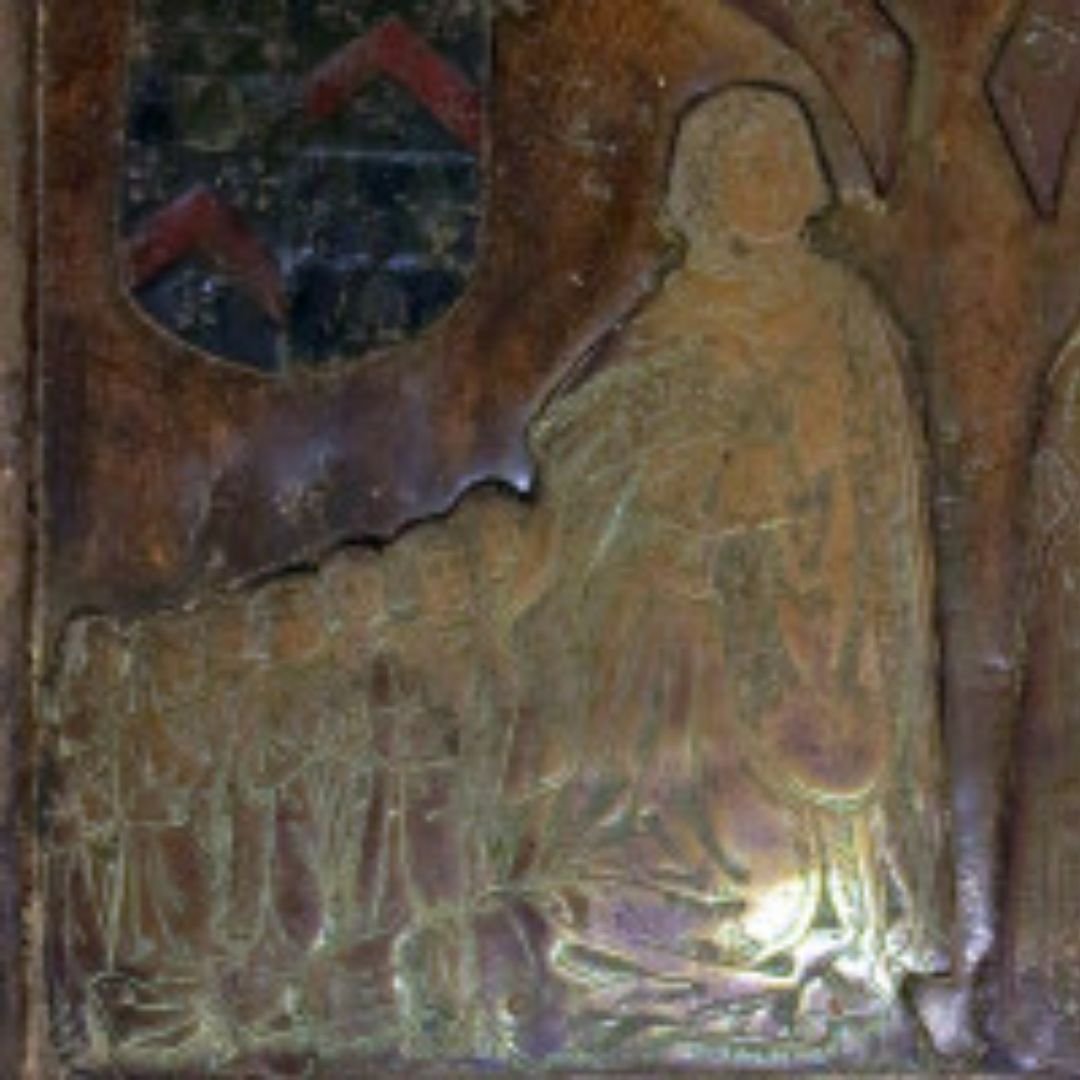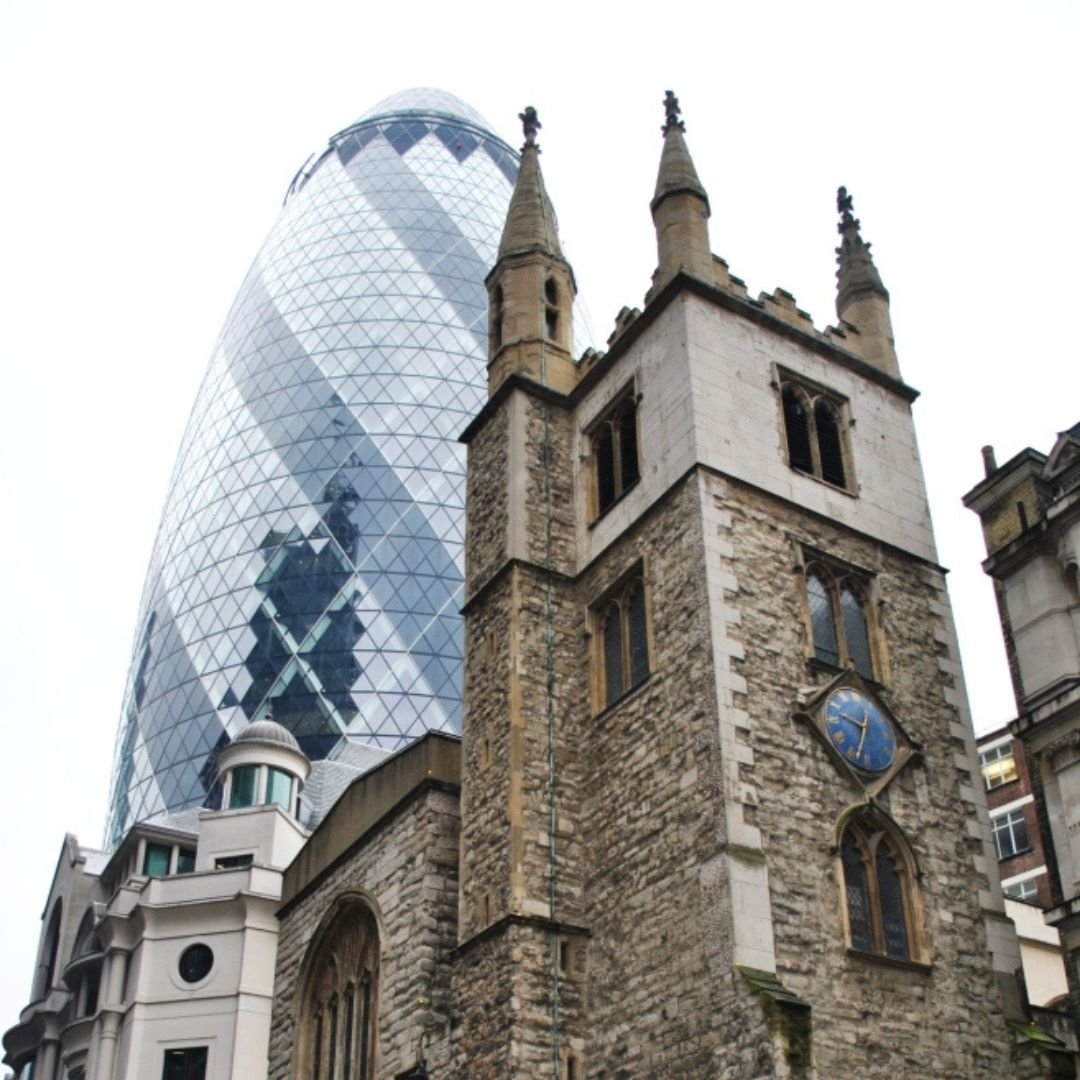St Andrew Undershaft, London: Remarkable Survivor
Built around 500 years ago, St Andrew Undershaft in London is Grade 1 listed.
Constructed in 1532, the church remarkably survived both the Great Fire of London and the Blitz.
A church has existed on this historic site since 1147.
The church's curious name derives from the shaft of the maypole that was traditionally set up each year opposite the church.
Formerly, St Andrew Undershaft had one of London's few surviving large stained-glass windows, installed in the 17th century, but this was destroyed in the Baltic Exchange bombing in 1992.
The Baltic Exchange bombing was an attack by the Provisional IRA on the City of London, Britain's financial centre, on 10 April 1992.
It occurred the day after the General Election which re-elected John Major from the Conservative Party as Prime Minister.
The one-ton bomb – concealed in a van and consisting of a fertiliser device wrapped with a detonation cord made from 100 lb (45 kg) of Semtex – was the biggest bomb detonated on mainland Britain since World War II.
The bombing killed three people, injured 91 others, and severely damaged surrounding buildings.
The church is built in the Perpendicular style with its entrance located at the base of its off-centre tower.
The interior is divided into six bays, with many of the original fittings that survived the Victorian renovation.
Though the interior was restored in the Victorian period, the restorers blessedly left many of the original Tudor furnishings untouched.
From the 17th and 18th Centuries, there are excellent examples of cartouche monuments, there is also a large organ that is dated to 1696, also Grade 1 listed.
The church's curious name derives from the shaft of the maypole that was traditionally set up each year opposite the church.
The custom continued each spring until 1517, when student riots put an end to it, but the maypole itself survived until 1547 when it was seized by a mob and destroyed as a "pagan idol".
According to John Stow, the chronicler who is buried here, they had it "raised from the hooks whereon it had rested for two-and-thirty years, sawn in pieces and burnt.
John Stow is commemorated with an alabaster monument, built after his death in 1605.
Stow's bust holds a real quill pen, and this pen is replaced with a new one by the Lord Mayor of London in a triennial ceremony in association with the Merchant Taylor's Company.
An earlier Lord Mayor, Hugh Hamersley, also has a memorial inside the church.
Another famous name associated with St Andrew's is the painter Hans Holbein, who lived in the parish and would have attended services here.
He was also the painter to his Majesty King Henry VIII.
Today, St Andrew Undershaft is administered from the nearby St Helen's Bishopsgate church.
The address is: St Mary Axe, London EC3A 8BN.
The main entrance from under this tower faces to Leadenhall Street, so that looking from St Mary Axe we see a distinctive silhouette of tower, a little over 90ft high, nave two thirds of the height, and aisle, one third of the height, thus a stepped effect.
From inside it all makes sense: the nave and attached chancel have a full length aisle on each side, but the south aisle (towards Leadenhall Street) has the western end (to St Mary Axe) occupied almost entirely by the tower.
Unfortunately, the church nowadays is normally closed to the public.
However, you can make arrangements for access with St Helen's Bishopgate, who now run the church.
Nevertheless, it’s beautiful to look at from the exterior.
Writing on TripAdvisor, someone said: “Having been out of london for Covid it’s refreshing to see the beautiful old churches are still is such great condition. Opposite Lloyd’s of London.”
A rare survivor of the Blitz
The British government knew that Germany would target London in their bombing raids.
If the capital was put out of action, it would severely affect the war effort and have a devastating impact on the nation’s morale.
The Blitz on London from September 1940 to May 1941 and the V1 flying bomb and V2 rocket attacks in 1944 caused a massive amount of damage.
It is estimated that more than 12,000 metric tons of bombs were dropped on London and nearly 30,000 civilians were killed by enemy action.
The worst hit places tended to be the poorer districts, like the East End, but all Londoners were affected by German air raids to a varying degree.
The Blitz changed the landscape of the city.
Many famous landmarks were hit, including Buckingham Palace, the Houses of Parliament, the Tower of London and the Imperial War Museum.
Some areas, such as Stepney, were so badly damaged that they had to be almost entirely rebuilt after the war.
A rare survivor of the Fire of London
436 acres of London were destroyed during the Fire of London, including 13,200 houses and 87 churches.
The fire ravaged through London for four days, finally ending on Wednesday 5 th September 1666.
Most notably St Paul’s Cathedral was completely gutted - what remained of the Cathedral was unworkable so it was demolished, and nine years later work started on a replacement building.
The scale of damage caused is why the event is so steeped in London history.
However, fortunately, St Andrew Undershaft survived the catastrophic event.
The social and economic problems created by the disaster were overwhelming.
Flight from London and settlement elsewhere were strongly encouraged by Charles II, who feared a London rebellion amongst the dispossessed refugees.
Various schemes for rebuilding the city were proposed, some of them very radical.
After the fire, London was reconstructed on essentially the same medieval street plan, which still exists today.
If you enjoyed this blog post, please follow Exploring GB on Facebook for daily travel content and inspiration.
Don’t forget to check out our latest blog posts below!
Thank you for visiting Exploring GB.























